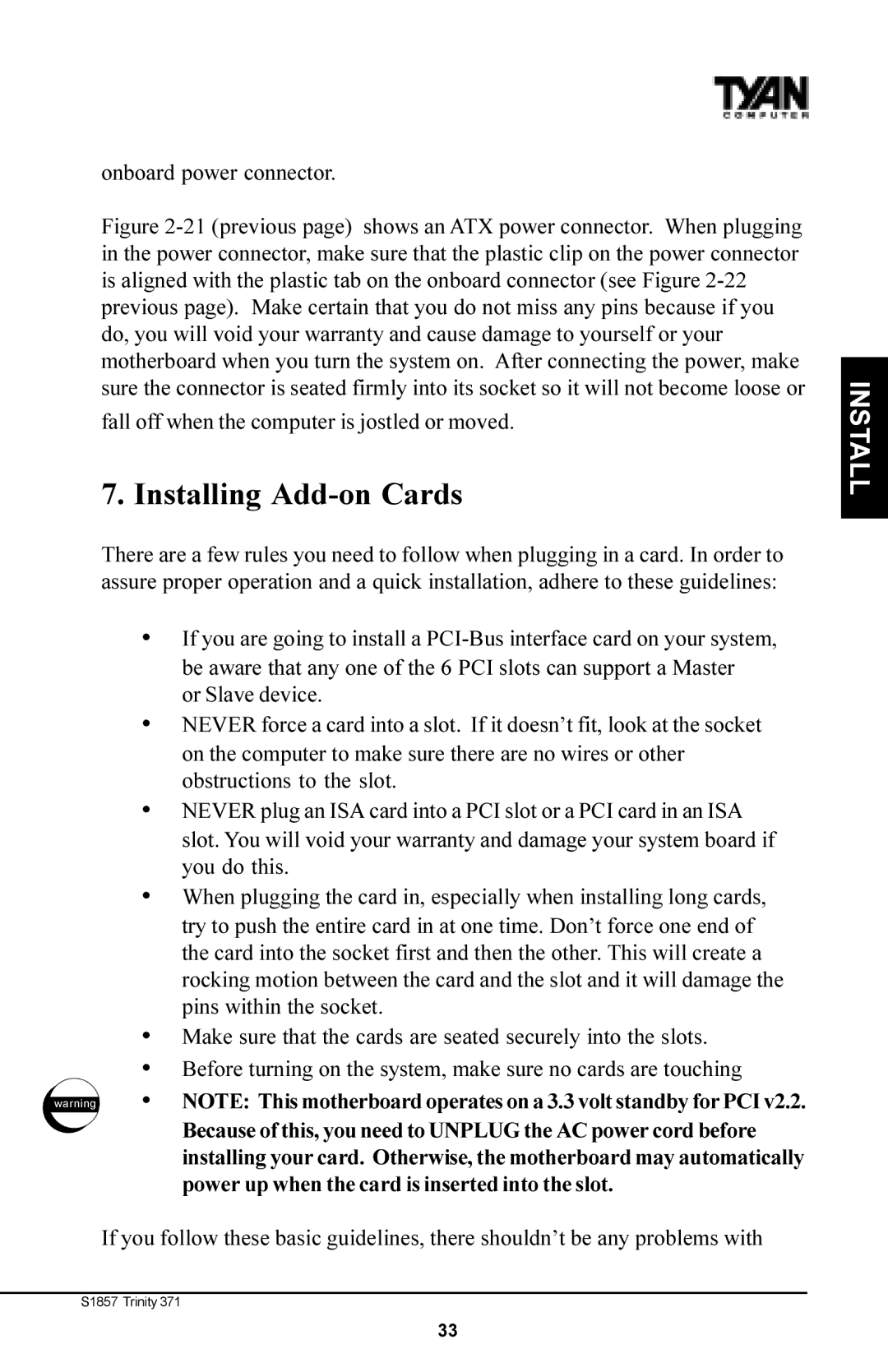Tyan S1857, Trinity 371 Motherboard specifications
The Tyan Computer Trinity 371 motherboard, also known as the Tyan S1857, is a versatile and reliable choice for various computing needs. Designed primarily for the industrial and server markets, this motherboard is known for its robust build quality and extensive feature set that supports a wide range of applications.One of the standout features of the Tyan S1857 is its support for AMD processors, specifically the Socket A (462) interface. This compatibility allows users to utilize a variety of AMD CPUs, including the Athlon and Duron series, ensuring that the motherboard can accommodate different performance requirements. The motherboard supports a maximum of 1.5GB of DDR SDRAM, enhancing its ability to handle memory-intensive applications and multitasking operations efficiently.
Additionally, the Tyan Trinity 371 offers integrated VIA Apollo KT133A chipsets, which provide reliable performance and optimized speed for both desktop and server environments. The motherboard supports a 100MHz Front Side Bus (FSB), ensuring high data transfer rates and improved overall system performance. The inclusion of five PCI slots permits the addition of various expansion cards, such as graphics cards, network cards, and additional storage controllers, enhancing the system’s versatility.
From a storage perspective, the Tyan S1857 features a standard IDE controller that supports up to four IDE devices. This includes the ability to connect multiple hard drives and optical drives, providing ample storage options for user needs. The motherboard also supports RAID configurations, which can enhance data redundancy and performance for server applications.
On the connectivity front, the Tyan Trinity 371 incorporates a variety of ports, including USB and serial ports, facilitating connections to peripherals and external devices. The onboard Ethernet connectivity ensures that users can easily connect to networks, making it suitable for both standalone and networked environments.
The Tyan S1857 also emphasizes stability and durability, making it a reliable choice for critical applications. Its design considers thermal management, allowing for effective heat dissipation, which is essential for maintaining optimal operating conditions, especially in industrial settings.
In summary, the Tyan Computer Trinity 371 motherboard, or Tyan S1857, stands out for its comprehensive feature set, robust support for AMD processors, and reliable performance in various applications. Its ability to support expansion through additional slots, RAID configurations, and versatile connectivity options makes it an excellent choice for both industrial and server environments.

